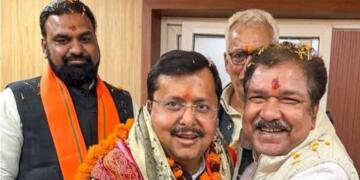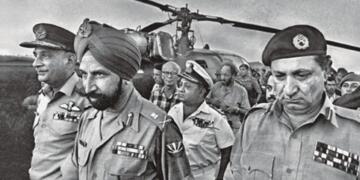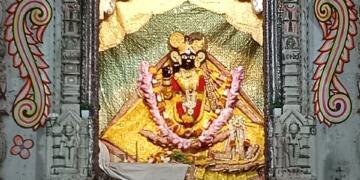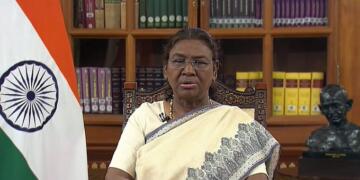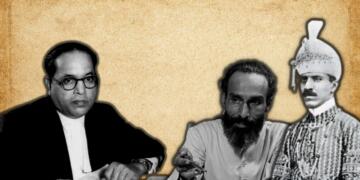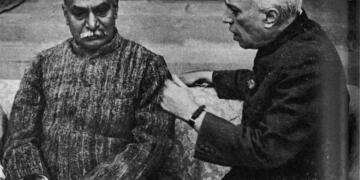In the 1990s, Bihar became synonymous with lawlessness, earning the infamous moniker “Jungle Raj” under the rule of Lalu Prasad Yadav, the then-Chief Minister and leader of the Rashtriya Janata Dal (RJD). Far from being a mere political slogan, Jungle Raj reflected a grim reality where crime flourished under state patronage, governance collapsed, and ordinary citizens lived in fear. From murders and kidnappings to gang rapes and extortion, Lalu’s tenure was marked by a series of horrific incidents that revealed the extent of his administration’s complicity in criminal activities. This article revisits some of the most notorious cases that define the dark days of Jungle Raj and Lalu Prasad Yadav’s role in enabling this era of terror.
The Murder of G Krishnaiyyah
One of the most chilling examples of Jungle Raj was the brutal murder of G Krishnaiyyah, a Dalit IAS officer from Andhra Pradesh, on December 5, 1994. While traveling through Muzaffarpur, Krishnaiyyah’s car was attacked by a mob participating in the funeral procession of criminal-turned-politician Chhotan Shukla, a close associate of Lalu Prasad. The mob, incited by inflammatory speeches from independent MLA Anand Mohan and his wife Lovely, an MP, mistakenly targeted Krishnaiyyah, believing him to be the district magistrate of Muzaffarpur. Despite his pleas, Krishnaiyyah was stoned and shot dead by Bhutkun, Chhotan’s brother, in a gruesome act captured by police intelligence. This incident underscored the unchecked power of criminal-politicians under Lalu’s regime, where even senior bureaucrats were not safe.
The Champa Biswas Rape Case
The horror extended beyond public violence to personal atrocities, as seen in the case of Champa Biswas, the wife of a Dalit IAS officer, BB Vishwas. In a shocking allegation, Champa, her mother, sister-in-law, two maids, and a niece were sexually assaulted by Mrityunjay Kumar Yadav, a close aide of Lalu Prasad, and his associates. The perpetrators used intimidation, violence, and coercion, forcing Champa to undergo an abortion and eventual sterilization to avoid pregnancy from repeated assaults. Mrityunjay’s mother, Hemlata Yadav, an RJD MLA, even pressured Champa to marry her son. The case, though reported to the Governor, highlighted the protection enjoyed by Lalu’s allies, as no significant action was taken against the perpetrators.
Mohammad Taslimuddin: Lalu’s Criminal Crony
Mohammad Taslimuddin, a veteran RJD leader and Union minister, epitomized the criminalization of politics under Lalu’s rule. Facing 16 charges, including rape, dacoity, and arson, Taslimuddin terrorized Araria, with allegations of detaining and assaulting a Santhali girl. Despite these serious accusations, he enjoyed Lalu’s patronage and even served in the cabinets of HD Deve Gowda and Manmohan Singh, shielded by the principle of “innocent until proven guilty.” His ability to operate with impunity reflected the broader collapse of law enforcement in Bihar, where criminals held sway over local authorities.
The Shilpi-Gautam Rape and Murder Case
The mysterious deaths of Shilpi Jain and Gautam Singh in 1999 further exposed the rot in Bihar’s governance. Found semi-nude in a car linked to Sadhu Yadav, Rabri Devi’s brother and an RJD MLA, their deaths were hastily declared a double suicide by the police. However, the botched investigation—marked by tampered evidence, hurried cremation, and political interference—raised suspicions of rape and murder. CBI’s DNA tests confirmed Shilpi was raped by multiple individuals, yet the case was closed as a suicide, allegedly to protect powerful figures like Sadhu Yadav. The mishandling of this case fueled public outrage and distrust in Lalu’s administration.
Rohini Acharya’s Mob-Style Wedding
Lalu’s influence extended to public displays of power, as seen during the 2002 wedding of his daughter, Rohini Acharya. RJD supporters, described as miscreants, looted car showrooms and furniture stores in Patna, seizing vehicles and luxury items for the lavish event. The Patna Police, allegedly under Lalu’s orders, turned a blind eye, allowing the chaos to unfold. This brazen misuse of power left businesses reeling and citizens terrified, cementing the perception of Bihar as a lawless state where Lalu’s family and supporters operated above the law.
Mohammad Shahabuddin
Perhaps no figure embodied Jungle Raj more than Mohammad Shahabuddin, a convicted gangster and RJD MP from Siwan. With over 40 criminal cases, including murder and kidnapping, Shahabuddin ran a parallel administration in Siwan, resolving disputes through khap panchayats and terrorizing locals. His 2001 gunfight with police and the discovery of illegal military-grade weapons, including AK-47s and night-vision goggles, revealed his ties to organized crime and possibly Pakistani intelligence. Shahabuddin’s reign of terror, enabled by Lalu’s patronage, made him untouchable for years, even as he contested elections from jail and won.
Economic and Social Devastation
Beyond individual crimes, Lalu’s rule devastated Bihar’s economy and society. State-run enterprises employing 35,000 people went unpaid for months to years, driving families into poverty and leading to suicides, such as that of Chandan Bhattacharya, who immolated himself in 2002 to protest his father’s unpaid wages. The Comptroller and Auditor General reported massive liabilities in public undertakings, with most in liquidation. Businesses fled Bihar to escape extortion, and caste conflicts turned Central Bihar into a “killing field,” as noted by the Patna High Court in 1997.
Lalu Prasad Yadav’s Jungle Raj was a dark chapter in Bihar’s history, characterized by unchecked criminality, administrative collapse, and the systematic patronage of gangsters like Mohammad Shahabuddin, Anand Mohan, and Mohammad Taslimuddin. From the murder of G Krishnaiyyah to the horrors inflicted on Champa Biswas and the mysterious deaths of Shilpi and Gautam, these incidents reveal a state where law and order were sacrificed at the altar of political power. Lalu’s legacy, as chronicled by journalists like Sankarshan Thakur and Prem Shankar Jha, remains a cautionary tale of how populist politics can destroy a state’s fabric. While the RJD’s dominance ended in 2004 with the rise of the BJP-JD(U) coalition, the scars of Jungle Raj continue to haunt Bihar, underscoring the enduring threat of Lalu’s brand of politics to Indian democracy.


